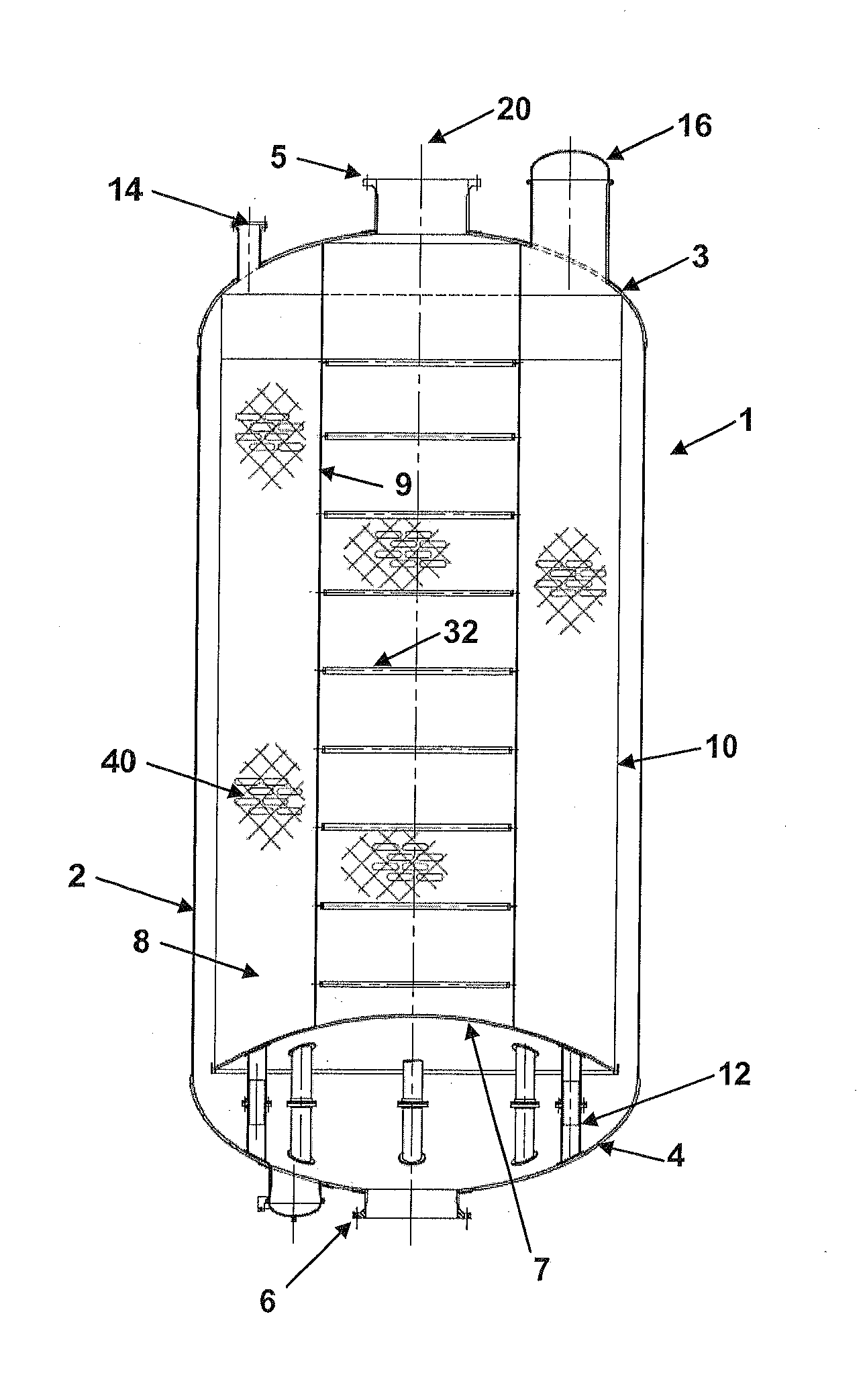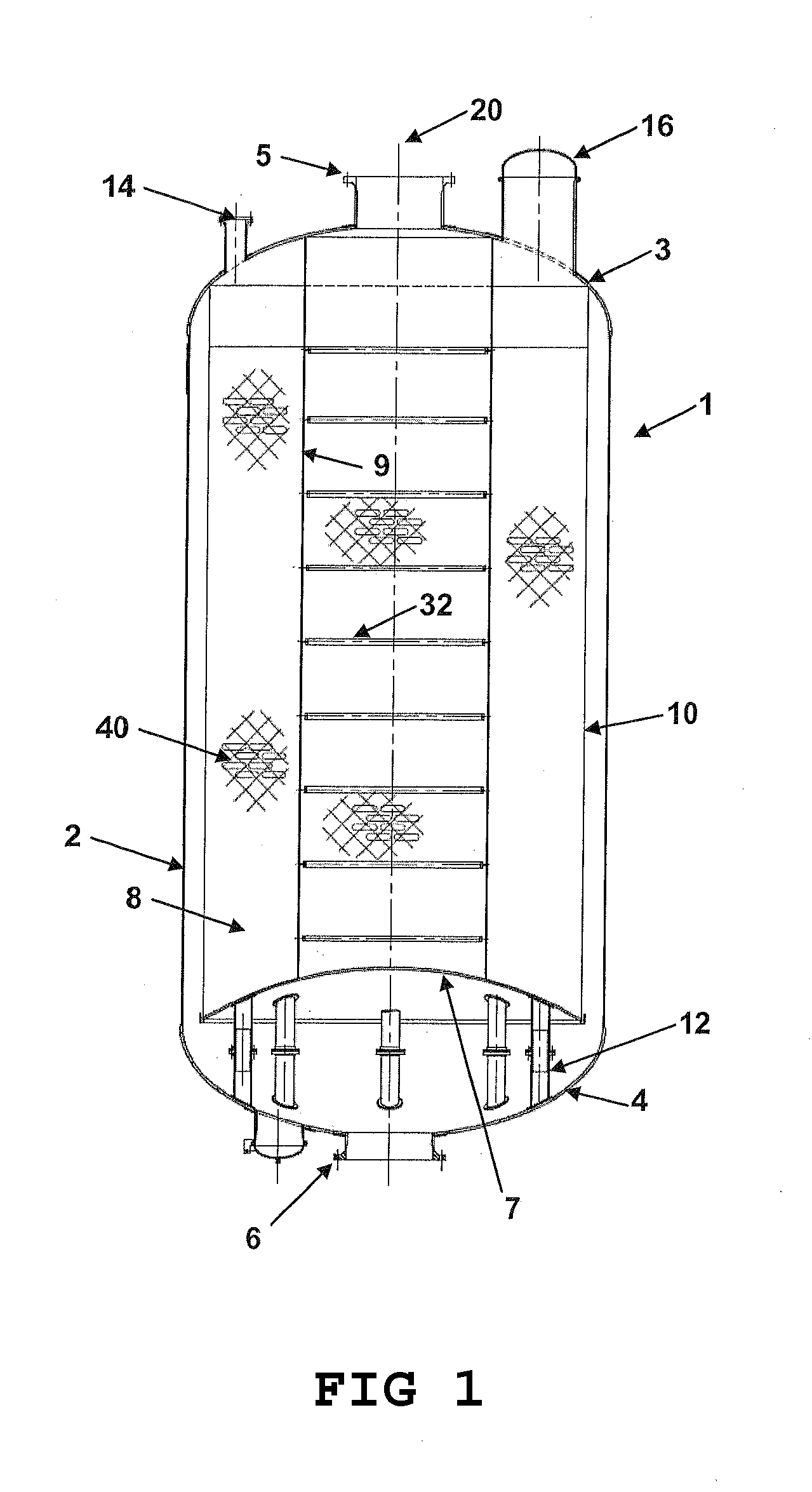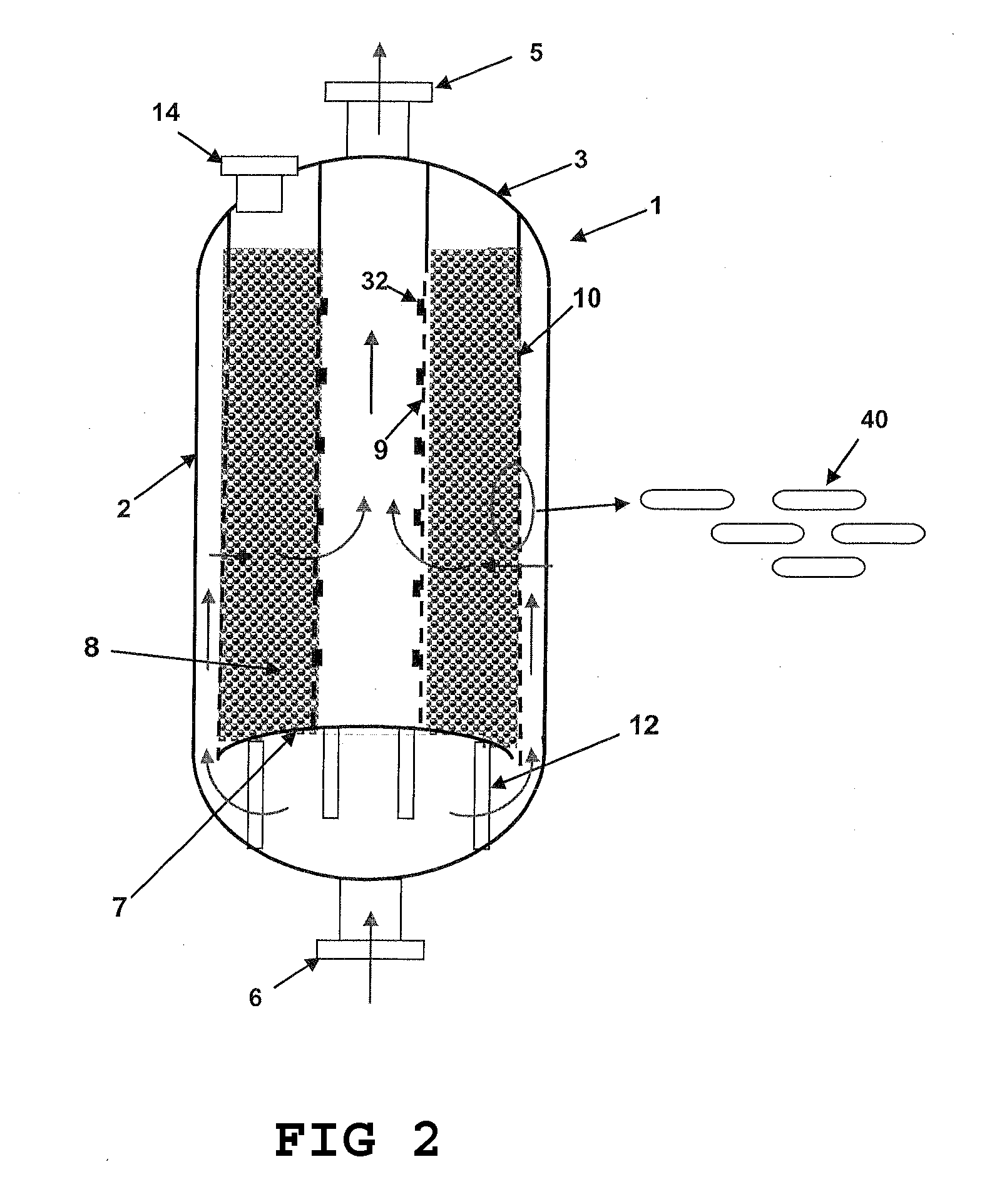Radial flow reactor with movable supports
a technology of radial flow reactor and movable supports, which is applied in the direction of physical/chemical process catalysts, separation processes, manufacturing tools, etc., can solve the problems of increasing the magnitude of thermally induced loads, increasing the cost of fuel, and increasing the size of vessels, so as to reduce thermally induced stresses and loads, and mitigate the adverse effects of thermally induced mechanical stresses
- Summary
- Abstract
- Description
- Claims
- Application Information
AI Technical Summary
Benefits of technology
Problems solved by technology
Method used
Image
Examples
Embodiment Construction
FIGS. 1-7 illustrate the basic structure of one embodiment of the radial flow pressure vessel of this invention and certain of its components. The cross-sectional view of FIG. 1 illustrates the essential features of this embodiment and of the invention, but does not show all fastener means, conduits and apparatus details or other aspects of the invention which are understood and readily apparent to one skilled in the art. FIG. 2 is a schematic of the vessel showing essentially the same features as in FIG. 1 and additionally the gas flow path through the vessel. The Figures do not represent actual dimensions.
Referring to FIG. 1, a substantially cylindrical radial flow reactor vessel (1) on a vertical longitudinal axis (20). The vessel has an outer shell (2) with upper (3) and lower (4) hemispherical caps as generally known in the industry. Lower cap (4) has inlet (6) for receiving a feed gas and upper cap (3) has outlet (5) for the exit of the product gas in normal operation. In prep...
PUM
| Property | Measurement | Unit |
|---|---|---|
| thickness | aaaaa | aaaaa |
| thickness | aaaaa | aaaaa |
| tension | aaaaa | aaaaa |
Abstract
Description
Claims
Application Information
 Login to View More
Login to View More - R&D
- Intellectual Property
- Life Sciences
- Materials
- Tech Scout
- Unparalleled Data Quality
- Higher Quality Content
- 60% Fewer Hallucinations
Browse by: Latest US Patents, China's latest patents, Technical Efficacy Thesaurus, Application Domain, Technology Topic, Popular Technical Reports.
© 2025 PatSnap. All rights reserved.Legal|Privacy policy|Modern Slavery Act Transparency Statement|Sitemap|About US| Contact US: help@patsnap.com



